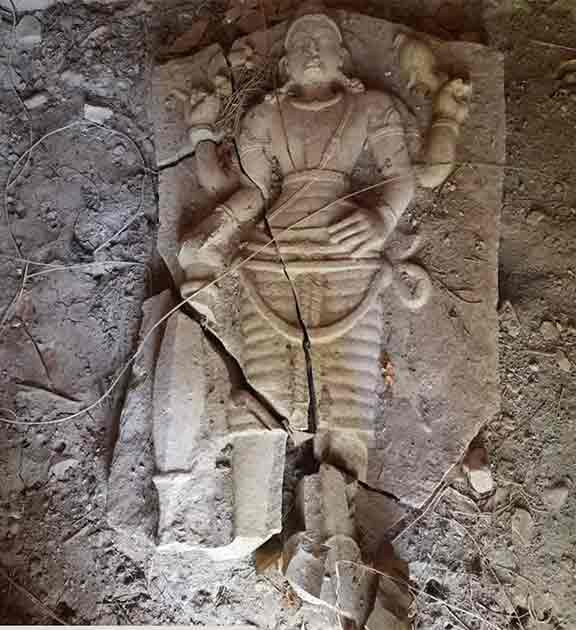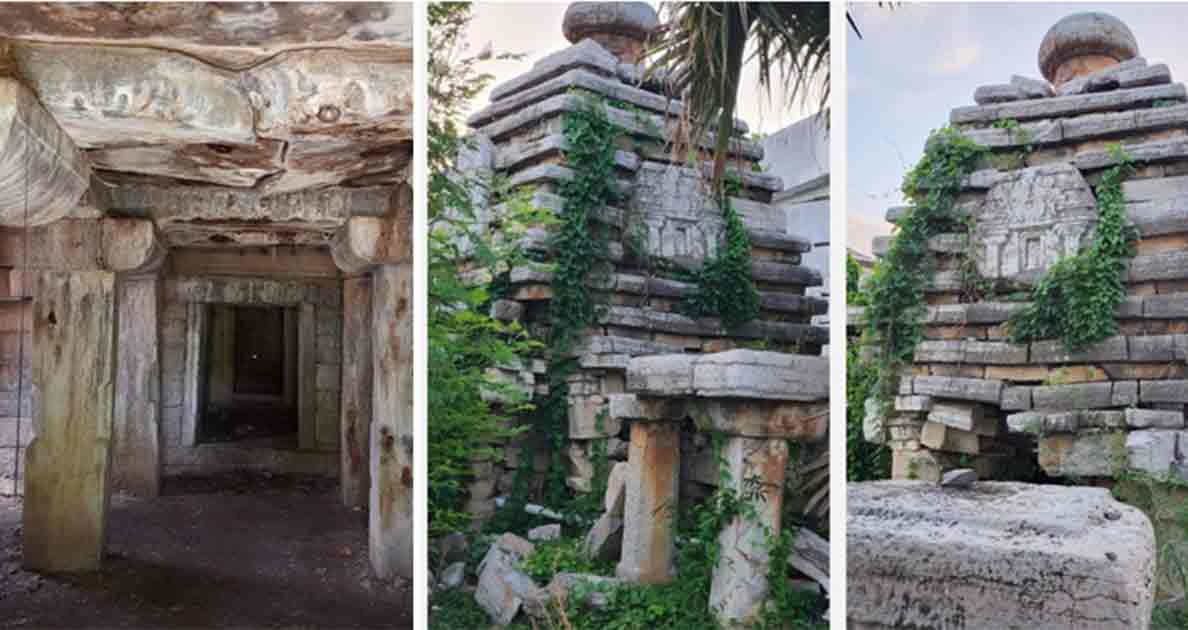Intact Badami Chalukya Temples & Inscriptions Unearthed in India
Archaeologists in southern India have made an amazing discovery, unearthing two temples dating back to the Badami Chalukya era. These 1,300-year-old temples, situated along the banks of the Krishna River near the village of Mudimanikyam in Telangana's Nalgonda district, exhibit remarkable preservation and are estimated to date from 543 to 750 AD. They showcase the distinctive Kadamba nagara architectural style, featuring pyramid-shaped shikaras adorned with ascending steps and crowned by pinnacle kalashas (a sacred water vessel for rituals).
Particularly noteworthy is the integration of features from the Rekha nagara architectural style, characterized by slightly curved towers reminiscent of northern Indian shikharas, with four sides of equal length, explained archaeologists from the Public Research Institute of History, Archaeology, and Heritage (PRIHAH) to The New Indian Express.
- Ramayana: The Grand Epic of Ancient India
- Art historian unlocks secrets of the ancient Virupaksha temple
Temple Grants and Hero Worship
One temple revealed a panavattam (a sacred metal base) still intact within the sanctum sanctorum, although the lingam, a representation of the Hindu god Shiva, was notably absent. In the other temple, an idol dedicated to the god Vishnu, also known as Narayana and Hari, was discovered, underscoring the significance of Hindu deities in the religious landscape of the era.

An idol dedicated to Vishnu was found within one of the temples. (Public Research Institute of History, Archaeology, and Heritage PRIHAH)
The inscription bearing the text ‘Gandaloranru’ was discovered on a pillar within one of the five temples located in the village. Dr. Munirathnam Reddy, Director of Epigraphy in the Archaeological Survey of India, commented on the inscription, stating that while the precise interpretation of the label inscription remains elusive, the initial two letters 'Ganda' in Kannada commonly denote "hero." This suggests that 'Gandaloranru' could potentially be a title bestowed upon a revered or significant figure from the era.
Archaeologists also unearthed another inscription believed to be approximately 350 years old, found engraved on two sides of a pillar within the Rama temple of Mudimanikyam. However, only one side of the inscription remains legible, reports The Times of India.
- The Sree Padmanabhaswamy Temple: Secret Cellars Create the Richest Hindu Temple in India
- Odd and Inexplicable Places in India Even Indians Don’t Know About!

The inscription found on a pillar of one of the five temples in the village. (Public Research Institute of History, Archaeology, and Heritage PRIHAH)
Dr. D Surya Kumar, an esteemed epigraphist and vice-president of PRIHAH, highlighted that the inscription provides detailed information about donations made to the Rama temple. These contributions originated from various locations, including Andhra Pradesh and Warangal. Clearly, the temple was a focal point for a multitude of people from across the geographical and religious spectrum in southern India.
Dr. Srinivasan from PRIHAH explained:
“These temples are exceptional as they are Badami Chalukya temples that adopted the Kadamba nagara style in the Rekha nagara format. This is the only example of this kind of architecture that is evident today in Telangana. With minimal restoration and conservation work, these temples can serve as testimonies to the Badami Chalukyan period in Telangana. Apart from the Badami Chalukyan temples at Alampur, few have stood the test of time.”
The Badami Chalukya Temples: A Cosmopolitan Architectural Blend
The Badami Chalukya architectural style emerged during the reign of the Badami Chalukya dynasty in Southern India, primarily in the 6th to 8th centuries AD. The dynasty was founded by Pulakeshin I, who established his capital at Vatapi, known today as Badami. Under Pulakeshin I and his successors, the Badami Chalukyas expanded their territory through military conquests and diplomatic alliances, becoming one of the dominant powers in the Deccan region.
The period of Badami Chalukya rule witnessed significant developments in various fields, including architecture, literature, and administration. The dynasty's patronage of art and architecture has been witnessed in the construction of magnificent temples and monuments, including the cave temples at Badami, Aihole, and Pattadakal, which are recognized as UNESCO World Heritage Sites, reports Outlook Traveller.
Their architectural style is renowned for its experimentation with rock-cut architecture and structural temples, which blend distinctive features from various regional and international architectural traditions, including those of northern India and South-East Asia.
The Chalukyan artisans carved out impressive cave temples from monolithic rock formations, particularly in the town of Badami in present-day Karnataka. These cave temples, such as the four caves at Badami, exhibit intricate carvings, elaborate pillars, and detailed sculptures of Hindu deities.
In addition to rock-cut cave temples, the style also encompasses structural temples built using stone and brick. These temples feature distinct architectural elements such as shikharas (towering spires), mandapas (pillared halls), and intricate sculptures adorning the exterior and interior walls, like the legendary Virupaksha temple at Pattadakal, and the Mallikarjuna temple at Badami.

As per PRIHAH, both temples have been unearthed in remarkable condition, dating back to the period between AD 543 and 750. Interior of the temple. (Public Research Institute of History, Archaeology, and Heritage PRIHAH)
An eclectic blend of Dravidian, Nagara, and Vesara traditions is evident in the diverse architectural elements and decorative motifs employed in the construction of temples and monuments. Scenes from Hindu mythology, royal patronage, and everyday life, are depicted liberally, making historical reconstruction a fascinating experience.
Top image: Badami Chalukya Temples dating back 1,300 years were unearthed in India. Source: (Public Research Institute of History, Archaeology, and Heritage PRIHAH)
By Sahir Pandey
References
Deb, S. 2024. A Splendour in Caves. Available at: https://www.outlooktraveller.com/see/chalukyan-architecture-in-badami.
ENE. 2024. 1,300-year-old inscription found in ancient Nalgonda temple. Available at: https://www.newindianexpress.com/states/telangana/2024/Feb/25/1300-year-old-inscription-found-in-ancient-nalgonda-temple.
Milligan, M. 2024. Preserved temples from the Badami Chalukya era found in India. Available at: https://www.heritagedaily.com/2024/02/preserved-temples-from-the-badami-chalukya-era-found-in-india/150679.

















